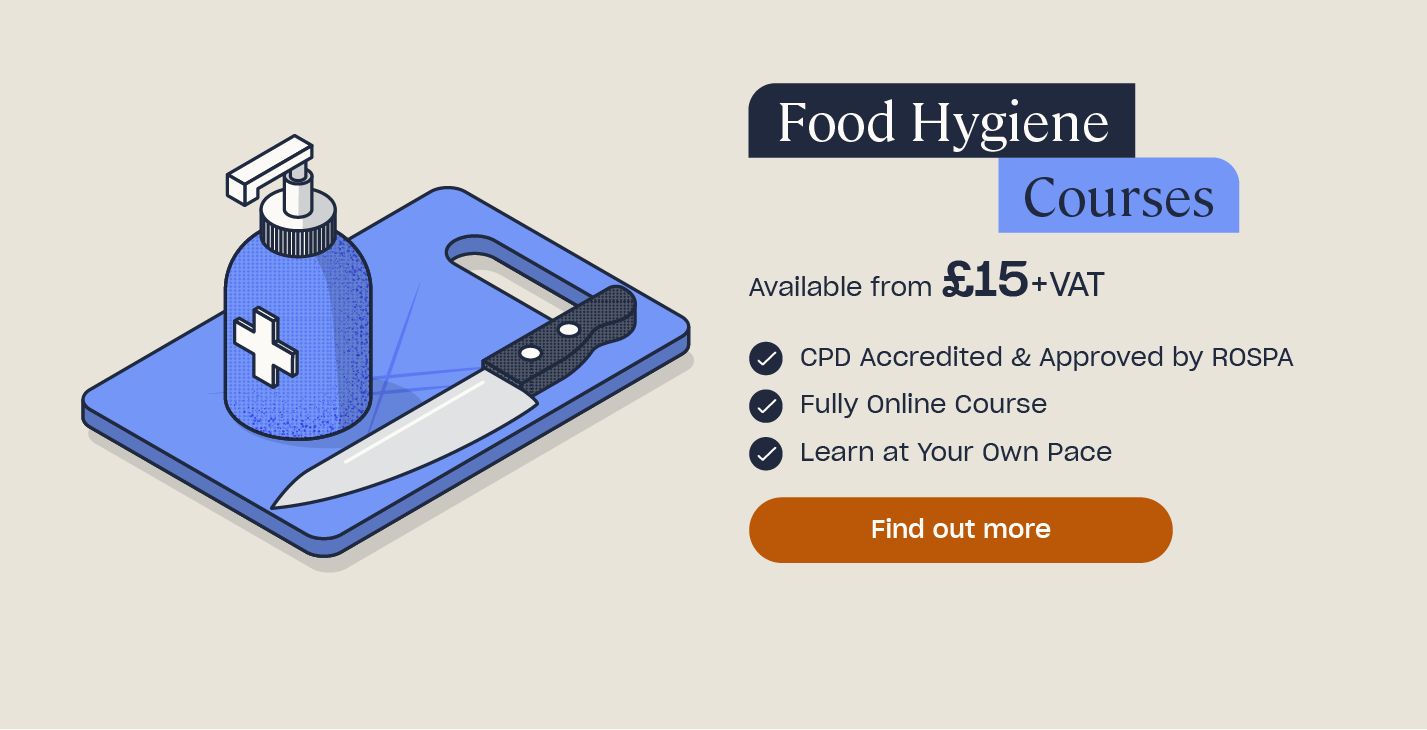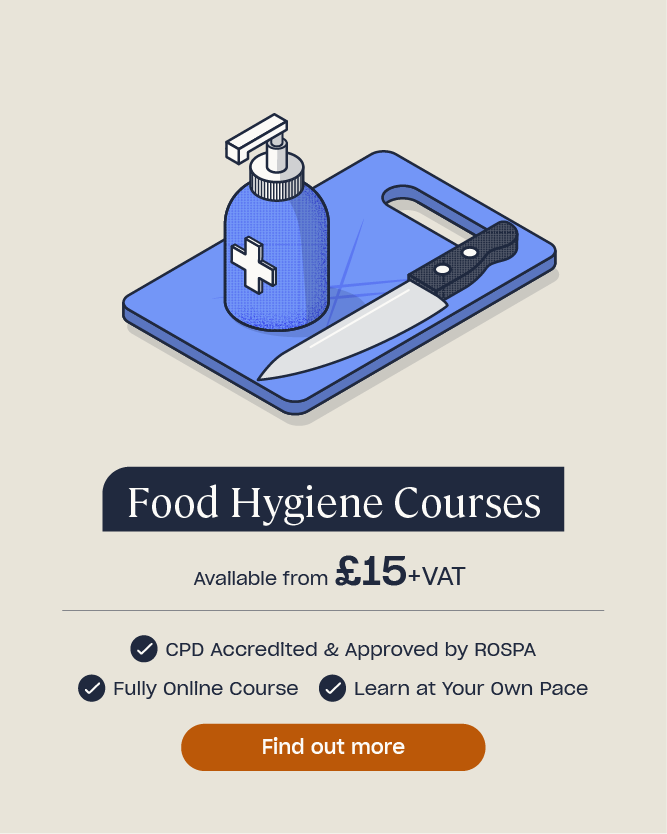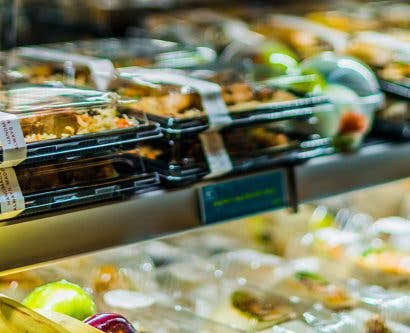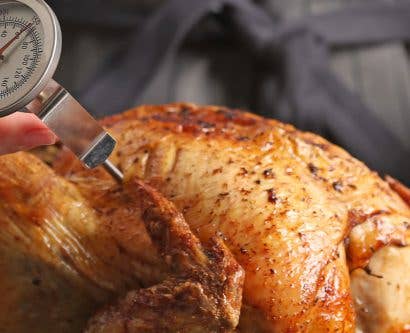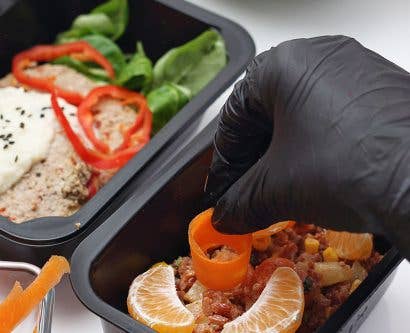A Guide to Food Thermometers
Food thermometers are an essential bit of kit that you will find in most domestic and all professional kitchens. Maintaining the correct temperature is vital to ensuring that food is safe for consumption. Food thermometers are important tools to support this and help keep consumers safe. In this article we will cover everything you need to know about food thermometers, from the different types that are available to how to calibrate and clean them.
What is a Food Thermometer?
A food thermometer, also known as a cooking thermometer, is a device that measures the temperature of food. It can be used at many different stages of the cooking process and is often used to check that food has been heated enough to kill bacteria and prevent foodborne illnesses. In order for food to be safe to consume it must be kept out of the temperature danger zone, either by keeping it cool/frozen or heating it. Food thermometers allow you to quickly see if food is within the danger zone and rectify it if so.
Food thermometers can also be used to check whether ingredients have reached the necessary temperature to cause a specific effect. For example, when making jam, it must reach a ‘setting point’ of around 105°C. In this instance a food thermometer may be used to ensure that the desired temperature has been reached.
Types of Thermometers for Food
There are many different types of food thermometers. They may be used to check the temperature of a fridge to ensure that it remains at a safe temperature for food storage, or they may be used to check the internal temperature of food. Probe thermometers can be inserted into food, whilst infrared thermometers can simply be pointed at the food. Some thermometers have digital displays, whilst others have dial displays. Comparatively, some thermometers are designed to deal with incredibly high temperatures and can be kept inside of food whilst it’s cooking, whilst others can’t. There are countless different options and varieties of thermometers available to suit your needs and your budget.
The different types of food thermometers include:
- Oven thermometer
- Fridge thermometer
- Infrared cooking thermometer
- Freezer thermometer
- Thermocouple
- Probe thermometer
- Milk/Frothing thermometer
- Sugar thermometer
How to Use a Food Thermometer
Food thermometers are easy to use, however the method of use will depend on the type that you have. For example, a meat probe thermometer will need to be inserted into the thickest part of the meat, whereas a sugar thermometer can often be left attached to the side of a pot during cooking. How you use a food thermometer will depend on the type you have, so it is always best to read the manufacturer’s instructions beforehand to ensure that you are using it properly.
Most food thermometers can be used in the following way:
- Ensure that the thermometer is clean and disinfected before use.
- Insert or place the thermometer into the food. If using a probe thermometer ensure that it has been inserted into the thickest part. If the food is still cooking or has only just been removed from the stove/oven, avoid touching the heated pan or placing the thermometer too close to the heat source as this will give an inaccurate reading.
- Measure the temperature. The temperature is likely to rapidly increase (or decrease depending on the situation) so be sure to wait till the temperature has settled before noting it.
- Remove the thermometer and clean and disinfect it.
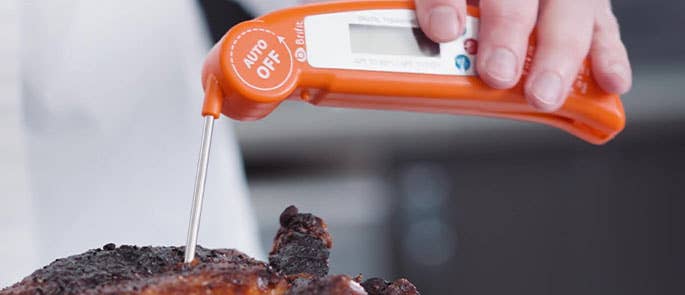
Fridge and oven thermometers are often left in situ and many modern fridges have built in temperature display units. Infrared thermometers can be pointed at food, however it should be noted that they measure the surface temperature of food and not the internal temperature, so are not necessarily as accurate as probe thermometers.
How to Calibrate a Thermometer
To ensure that they continue to give accurate readings, thermometers should be calibrated regularly. How frequently you choose to do this is up to you, the type of thermometer you use and how regularly you use it. It is also worth reading the manufacturer’s instructions to see if they recommend a specific time frame.
There are two methods commonly used to calibrate a thermometer; the boiling point method and the ice point method. It’s important that you read the manufacturer’s instructions thoroughly before calibration to check that there isn’t a specific method needed for your thermometer.
Boiling Point Method:
- Bring a pot of water to a rolling boil.
- Insert the clean thermometer into the water. Ensure that the sensor is fully submerged but avoid touching the pot.
- Wait for the temperature reading to stabilise.
- The reading for boiling water should be between 99°C and 101°C. If not, adjust accordingly. If the thermometer can’t be adjusted and the reading is outside of this range then you should replace it or if possible return it to the manufacturer to be calibrated.
Ice Point Method:
- Fill a glass with ice cold water. You can add crushed ice to the water to form a slurry to ensure that the water is cold enough.
- Insert the clean thermometer into the water. Ensure that the sensor is fully submerged but avoid touching the sides of the glass.
- Wait for the temperature to stabilise.
- The reading for ice water should be between -1°C and 1°C. If not, adjust accordingly. If the thermometer can’t be adjusted and the reading is outside of this range then you should replace it or if possible return it to the manufacturer to be calibrated.
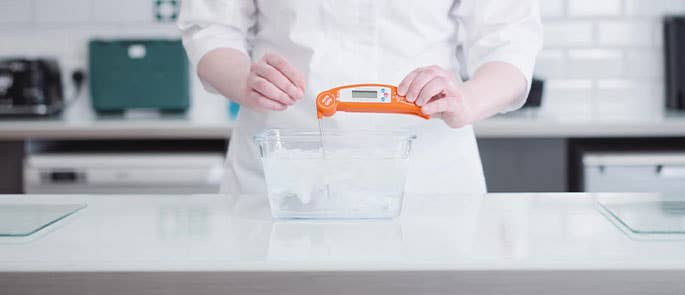
The Food Standards Agency (FSA) recommends that food thermometers should be accurate within -0.5°C and +0.5°C. If your thermometer’s readings are outside of this range then they must be adjusted accordingly or replaced. Thermometers that require adjustment for 3 consecutive months should be replaced.
All food businesses are legally required to have a HACCP based food safety management system. Many of these systems contain thermometer calibration logs. Regular thermometer calibration ensures that your readings are accurate and safe. Moreover, during a food hygiene inspection an EHO may ask to see your logs and they will expect to see that these are regularly filled in.
How to Clean a Thermometer
It is important to keep your thermometer clean and disinfected to avoid cross contamination. Check the manufacturer’s instructions to clarify whether there are specific cleaning methods you should follow or specific products that you should use.
Most food thermometers can be cleaned in the following way:
- Wipe off any food or visible contaminants.
- Wash the probe in hot soapy water. Be careful not to submerge the whole thing in water and focus on the part that has been inserted into the food.
- Disinfect the probe using an appropriate, food safe sanitiser or by leaving it in boiling water for a few minutes.
- Dry thoroughly.
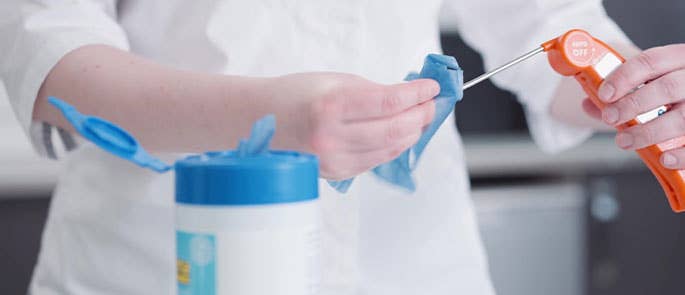
Maintaining the correct temperature is vital to keeping people safe and reducing the risk of foodborne illnesses. From domestic kitchens to professional kitchens, food thermometers are essential tools for checking that food has reached the desired temperature and is safe to consume.
Further Resources:
- Food Hygiene Courses
- What is the Temperature Danger Zone? Free Food Safety Chart
- Safe Temperatures for Food Storage: A Free Guide to Cooling and Chilling Times


